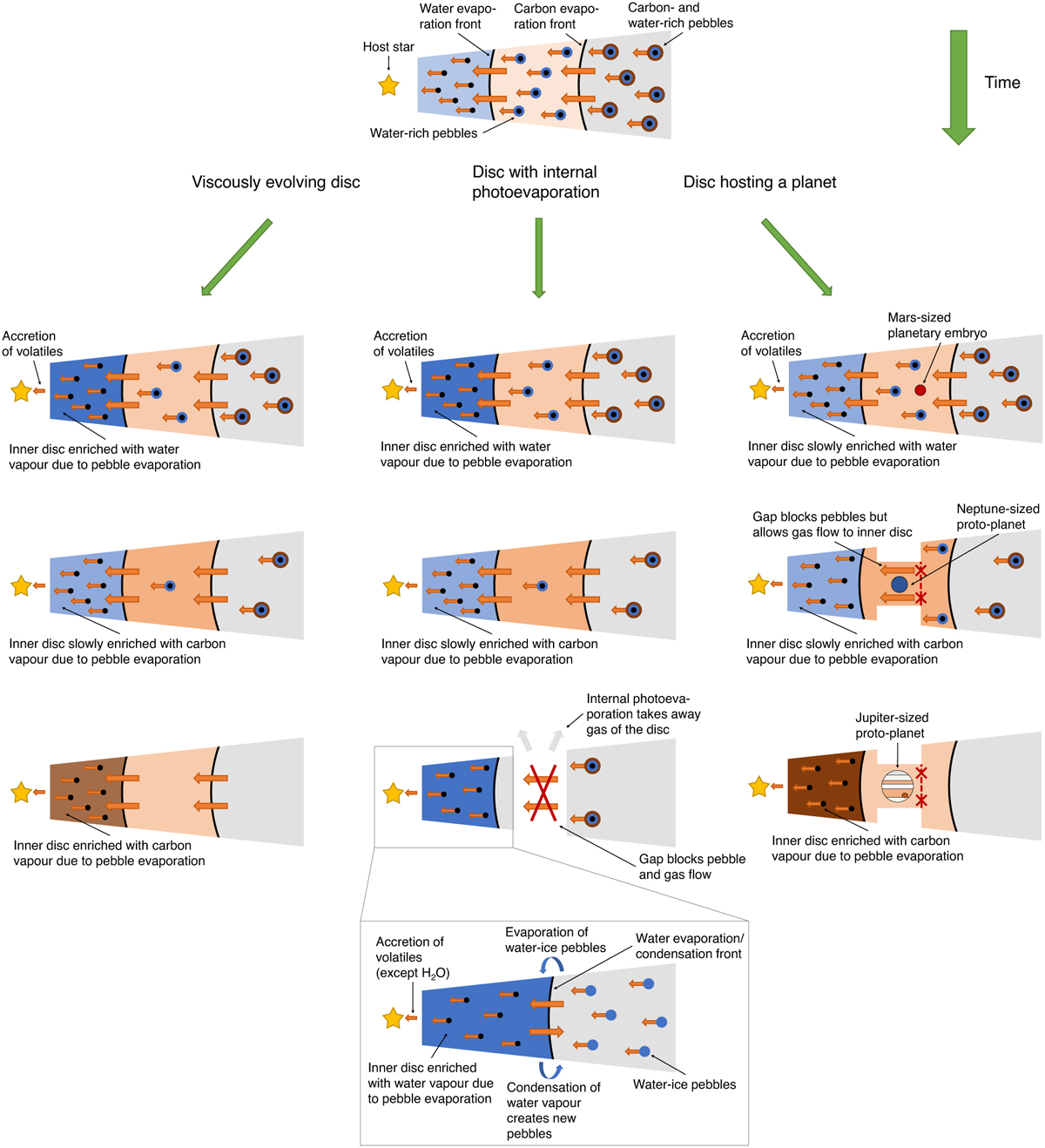Fig. 8

Download original image
Phases of disc evolution, with the left column depicting a pure viscous disc, the middle column a viscous disc with internal photoevaporation, and the right column a viscous disc with a growing planet. Top panel: initial state of the protoplanetary disc, with its inner part being slightly enriched with water vapour, its middle part being slightly enriched with carbon vapour and its outer regions showing no enrichment. The evaporation line of water and the combined one of all carbon-bearing molecules are marked with black, curved lines. Their curvature is the result of a temperature gradient between the mid-plane and surface layers of the disc. Pebbles are distributed evenly across the full disc, showing icy layers according to their position in it. Left column: during the pure viscous evolution, pebbles drifting inwards evaporate their volatile content whenever crossing an evaporation front. Due to the position of the ice lines and the fact that pebbles drift faster than gas, the inner disc is first enriched with water vapour (top panel). With time, carbon vapour arrives (middle panel) and slowly enriches the inner disc (lower panel), while the gas is accreted onto the host star. Middle column: with internal photoevaporation, the disc evolves similarly to the pure viscous case in the beginning (first and second panel). When photoevaporation opens a gap, gas diffusing into it is carried away by photoevaporative winds while pebbles are blocked by the gap itself (third panel). The inner disc is then enriched with water vapour again due to the water equilibrium cycle (fourth panel). All volatiles, except water, are accreted onto the host star. Water contrarily recondenses at the water-ice line and forms water pebbles that evaporate again, contributing to a full cycle of evaporation and condensation that allows the water vapour to survive for a long time. Right column: a planet forming between the water evaporation front and the ice lines of carbon-bearing molecules leads to the same chemical evolution of the disc as in the pure viscous case. When the planet is massive enough, it opens a gap, but contrary to the gap caused by photoevaporation, a gas flow to the inner disc is still possible. The only differences are less water enrichment in the beginning due to the planetary embryo already blocking some inflow (top panel) and a higher carbon enrichment in the late stages (lower panel).
Current usage metrics show cumulative count of Article Views (full-text article views including HTML views, PDF and ePub downloads, according to the available data) and Abstracts Views on Vision4Press platform.
Data correspond to usage on the plateform after 2015. The current usage metrics is available 48-96 hours after online publication and is updated daily on week days.
Initial download of the metrics may take a while.


